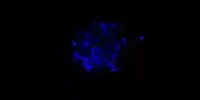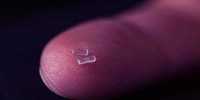One of the most promising silicon platforms for developing integrated photonic devices in the field of optical communications and sensing applications is a silicon insulator. Furthermore, it is compatible with the well-established complementary metal-oxide-semiconductor (CMOS) fabrication process, allowing integrated circuits to perform both photonics and electronics.
Researchers created a silicon coating that, when applied to the surface of a glass lens, can mitigate the effects of dispersion.
Laser light bursts lasting less than a trillionth of a second are now used in a variety of applications. Scientists have used ultrashort laser pulses to observe chemical reactions in real-time, image delicate biological samples, build precise nanostructures, and send long-distance, high-bitrate optical communications.
However, any application of ultrashort laser pulses in the visible spectrum must overcome a fundamental challenge: red light travels faster than blue light through transparent materials such as glass. As a result, when an ultrashort laser pulse passes through a glass lens, the tightly packed wavelengths of light separate, rendering the beam useless. For decades, optical researchers have struggled with chromatic dispersion. Most solutions today include extra components that increase the size and bulk of optical devices.
Harvard John A. Paulson School of Engineering and Applied Sciences (SEAS) researchers have developed a silicon coating that, when applied to the surface of a glass lens, can counteract the effects of dispersion. The study was published in the journal Nature Communications.

“Our adaptable approach can be quickly implemented in conventional optics and optical setups and adapted to different spectral regions and applications,” said Federico Capasso, the study’s senior author and the Robert Wallace Professor of Applied Physics and Vinton Hayes Senior Research Fellow in Electrical Engineering at SEAS.
The ultra-thin coating employs precisely designed silicon pillars that capture and hold red light for a brief period of time before re-emitting it. This brief pause allows the slower-moving blue light to catch up.
“Our coating counteracts the dispersive effects of transparent materials by acting as a speed bump for red light and averaging out the speed of each wavelength of light,” said Marcus Ossiander, the paper’s first author and a postdoctoral research fellow at SEAS.
The researchers tailored the dispersal of silicon nanopillar arrays “such that they temporally reshape pulses upon transmission using slow light effects and act as ultrashort laser pulse compressors.” According to the study, the silicon coatings “induce anomalous group delay dispersion” in the visible to near-IR region, at an approximately 800-nm wavelength over an 80-nm bandwidth.
Researchers have discovered that the pillars can capture, retain, and then re-radiate red light in a short period of time. Temporary hold basically “allows the slow-moving blue light to catch up.” In this study, published in Nature Communications, we tested silicone coatings by reducing the laser pulse to “only a trillionth of a second.”
Researchers tested the coating by reducing the laser pulse to just a trillionth of a second. Nanopillar silicon coatings are created using the same commercially available lithography tools as industrial semiconductors, allowing you to quickly apply these coatings to existing optics and expand the range of femtosecond laser pulses.
“Our coating can counteract the dispersion effect of transparent materials, act as a speed bump for red light, and average the speed of light at each wavelength,” said Marcus Ossiander, the lead author of the study and a postdoctoral researcher at SEAS. “Now, anyone can buy lenses, apply coatings, and use lenses without worrying about dispersion. This method can become the basis for a series of anti-dispersion or non-dispersion optics.”
“Now, anyone can buy lenses, apply coatings and use lenses without worrying about dispersion,” Ossiander said. “This method can be the basis for a series of anti-dispersion or non-dispersion optics.”















